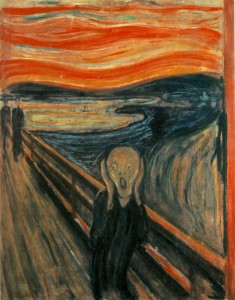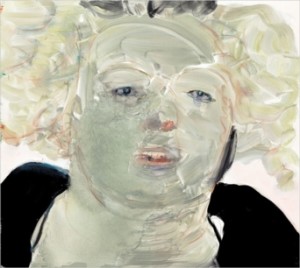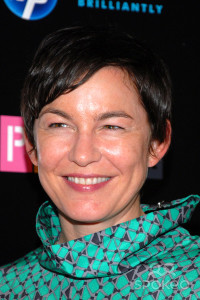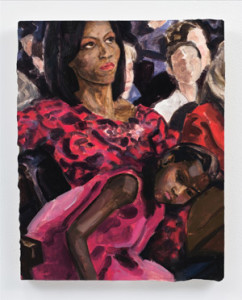Like last week’s featured artist, Marlene Dumas also uses painting as her primary form of media. She was born in Cape Town, south Africa in 1953, but moved to Netherlands in the late 70s where she later found success as a painter.
Her images largely focus on humanity, and oftentimes highlight the female form. A lot of her works are very bleak and disturbing, as Dumas’s work is described as “intense and psychologically charged.” Her pieces examine a broad range of human nature, from sexuality to death.
Dumas’s style of painting has been compared to the early 20th century form of Expressionism, with her loose strokes and unexpected colors. An example of an expressionist painting is the well-known piece, “The Scream” by Edvard Munch. Pictured below, the strokes are long, and freeform, and Munch has clearly taken liberties in his color choice. The entire image creates a very disturbing effect.
When look at Dumas’s pieces, I get a similar disturbed feeling. Though I can appreciate the message and intent behind her paintings, something about them– their colors, their misshapen depiction of the human form– really leaves me feeling, well, creeped out. But, I don’t see that as a bad thing. Like all artists, Dumas is trying to make the viewer think and feel things, no matter how strange, when they look at her pieces.
Purple pose
I think this is a good example of her paintings that just kind of leave the viewer puzzled. The color scheme is very bleak and unexciting (certainly not purple at all, as the title suggests), and the female figure is clearly not realistic. Her proportions are exaggerated, making her look odd and gangly. With the way she is standing, every aspect of her body is entirely visible– the pose is suggestive, almost pornographic. Though I don’t know exactly what Dumas wants to convey here, I’d imagine it’s a commentary on the reality of female sexuality.
Like Elizabeth Peyton, Dumas has also produced images of celebrities. I suppose this isn’t all that strange for contemporary artists, since these figures play such a huge role in our society, for better or for worse. After Amy Winehouse’s sudden death in 2011, Dumas made a beautiful and somber portrait commemorating her.
I like how Dumas varies her portrayal of people– in the painting above, Amy is very beautiful, and looks quite serene. In a lot of her other works, however, like the one mentioned above and the self-portrait below, Dumas can create an ugly, jarring image of humanity.
As I mentioned above, this is a self-portrait of the artist. I honestly laughed when I saw this, because it’s so strange-looking. I think it’s really brave and honest of Dumas to portray herself in this way, instead of glamorizing herself. She is a very interesting artist and I hope to see where her career takes her.










